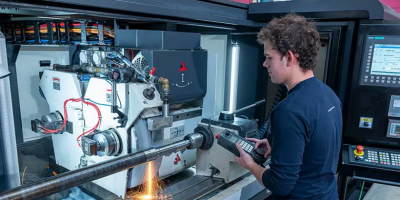In the ever-evolving landscape of modern work, remote employment has become an integral part of many businesses. While this shift brings about numerous advantages, effective communication remains a pivotal factor in ensuring the success of remote operations. The challenge lies in bridging the physical distance between team members. It can be hard to foster a sense of connectivity and facilitate seamless collaboration when people aren’t in the same building as each other, but it can certainly be accomplished. Keep reading to learn more about strategies that can improve communication with remote employees.
Use Different Channels
One fundamental aspect of successful remote communication is the utilization of multiple communication channels. Traditional email serves as a formal means of communication and documentation. However, for real-time conversations and quick exchanges, instant messaging platforms prove invaluable. Utilizing a sms api provider can be a smart move, as it allows you to instantly send messages to your team. Employing a diverse set of channels ensures that communication is efficient and tailored to the nature and urgency of the message.
Make Sure You Can See Each Other
Regular video meetings play a crucial role in maintaining a sense of connection among remote team members. These meetings go beyond mere work discussions; they provide a platform for team members to interact on a personal level. They offer a bridge to the personal interactions often lost in remote settings, enabling face-to-face communication even across great distances. Further, video calls can offer the advantage of visual cues, enhancing understanding and reducing the likelihood of miscommunication. Scheduled at regular intervals, these meetings serve as a virtual gathering point, strengthening the bonds among team members and contributing to a positive team dynamic.
Keep Everyone Updated
Project updates are essential for keeping remote employees informed about the progress of ongoing initiatives and changes within the company. Leveraging project management tools helps in providing real-time updates on project statuses, tasks, and milestones. This results in enhanced transparency and more efficient collaboration, ensuring that everyone is working towards common objectives. In addition to project updates, regular communication regarding company news and changes helps remote employees stay connected to the broader organizational context. Along that note, utilizing shared documents and cloud storage ensures that everyone has access to the latest information, reducing the risk of misinformation.
Welcome Feedback
Encouraging open communication is pivotal in a remote work setting. Remote employees should feel comfortable sharing their thoughts, concerns, and ideas. Establishing a culture of openness involves creating channels for feedback, conducting regular one-on-one check-ins, and actively seeking input from team members. By creating an environment where every voice is heard, businesses can tap into the collective intelligence of their remote workforce, leading to innovative solutions and a more engaged team. Actively seeking and acting on feedback demonstrates a commitment to improvement and makes it easier to develop trust.
Build a Team
Cultivating a team culture in a remote environment requires intentional efforts. Virtual team-building activities and social events play a crucial role in bringing team members together in a non-work setting. Celebrating achievements and milestones, even in a virtual space, contributes to a positive team culture. These activities can offer a break from the routine and can help everyone develop a sense of belonging, making remote employees feel like integral parts of a cohesive team. At the same time, encourage individuals to set clear boundaries between work and personal time. This reduces the chances of employees feeling stressed and overworked. Respect the need for downtime and allow remote employees to recharge. They’ll appreciate that you recognize their need to spend time away from work.
Focus on Training
Training is a key element in ensuring that remote employees are adept at using the communication tools at their disposal. Providing training on effective remote communication strategies and tools equips employees with the skills needed to navigate the virtual workspace efficiently. This includes guidance on the use of collaboration tools, video conferencing etiquette, and best practices for asynchronous communication. Investing in training empowers employees to make the most of available resources, ultimately enhancing the overall effectiveness of remote communication. If any issues arise, providing technical support is a practical step in ensuring smooth remote operations. Offering assistance with communication tools and promptly addressing technical issues helps maintain a seamless workflow.
Try These Tips
Communication with remote employees is a multifaceted endeavor. It requires a combination of thoughtful strategies and proactive measures. By leveraging a diverse array of communication channels and nurturing a positive culture of open communication, businesses can overcome the challenges posed by physical distance. As a result, a more thriving remote work environment can be created. The implementation of these strategies not only enhances communication but also contributes to the success and sustainability of remote business operations in the long run.














Comments